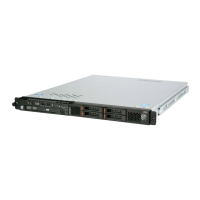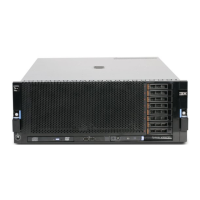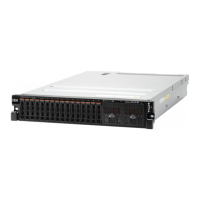merged DSA log. You can also use DSA Preboot to view these logs, although you must restart the server to
use DSA Preboot.
To install DSA Portable, DSA Preboot or to download a DSA Preboot CD image, go to
http://www.ibm.com/
support/entry/portal/docdisplay?lndocid=SERV-DSA
.
If IPMItool is installed in the server, you can use it to view the system-event log. Most recent versions of the
Linux operating system come with a current version of IPMItool.
For an overview of IPMI, go to
http://www.ibm.com/developerworks/linux/blueprints/ and click Using
Intelligent Platform Management Interface (IPMI) on IBM Linux platforms.
You can view the IMM system event log through the Event Log link in the integrated management module
(IMM) web interface. For more information, see
“Logging on to the Web interface” on page 524.
The following table describes the methods that you can use to view the event logs, depending on the
condition of the server. The first three conditions generally do not require that you restart the server.
Table 7. Methods for viewing event logs
Condition Action
The server is not hung and is connected to a network. Use any of the following methods:
• Run DSA Portable to view the event logs or create an
output file that you can send to a support
representative.
• In a web browser, type the IP address of the IMM and
go to the Event Log page.
• Use IPMItool to view the system-event log.
The server is not hung and is not connected to a network. Use IPMItool locally to view the system-event log.
The server is not hung and the integrated management
module (IMM) is connected to a network.
In a web browser, type the IP address for the IMM and go
to the Event Log page. For more information, see
“Obtaining the IP address for the IMM” on page 524 and
“Logging on to the Web interface” on page 524.
The server is hung.
• If DSA Preboot is installed, restart the server and press
F2 to start DSA Preboot and view the event logs.
• If DSA Preboot is not installed, insert the DSA Preboot
CD and restart the server to start DSA Preboot and
view the event logs.
• Alternatively, you can restart the server and press F1 to
start the Setup utility and view the POST event log or
system-event log. For more information, see
“Viewing
event logs from the Setup utility” on page 26
.
Clearing the error logs
Use this information to clear the event logs.
To clear the error logs, complete the following steps:
Note: The POST error log is automatically cleared each time the server is restarted.
Step 1. Turn on the server.
Step 2. When the prompt <F1> Setup is displayed, press F1. If you have set both a power-on password and
an administrator password, you must type the administrator password to view the error logs.
Chapter 3. Diagnostics 27

